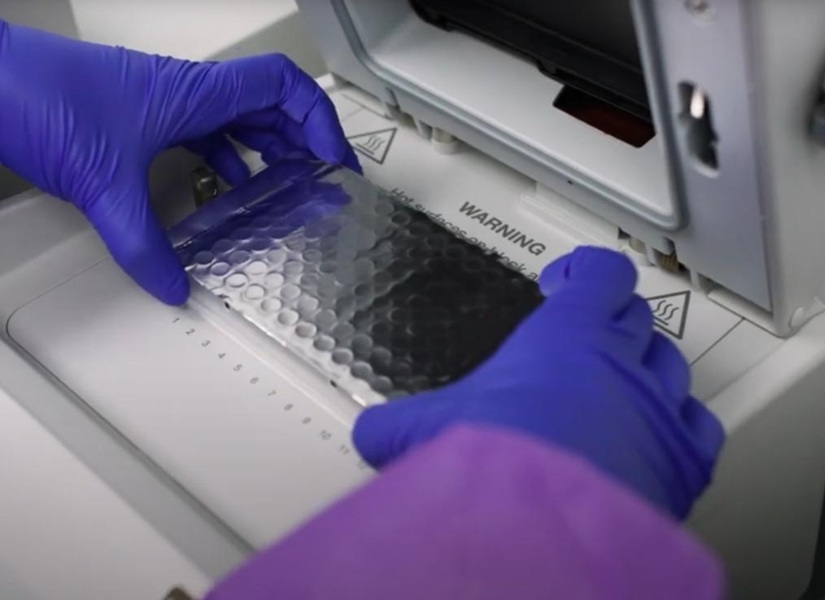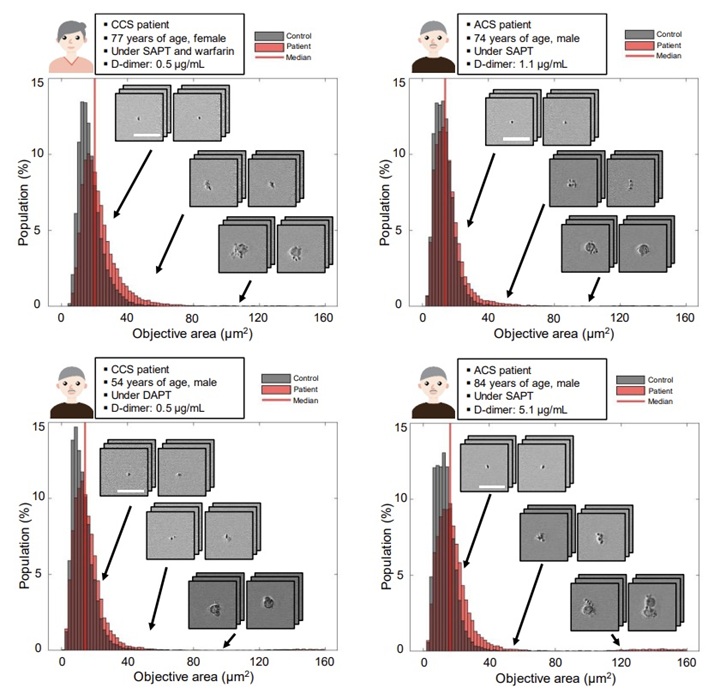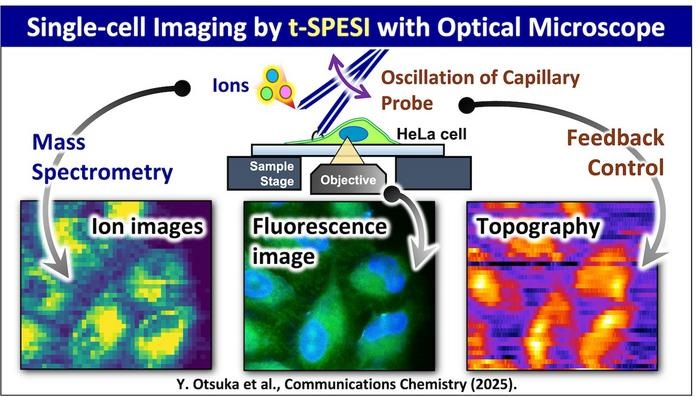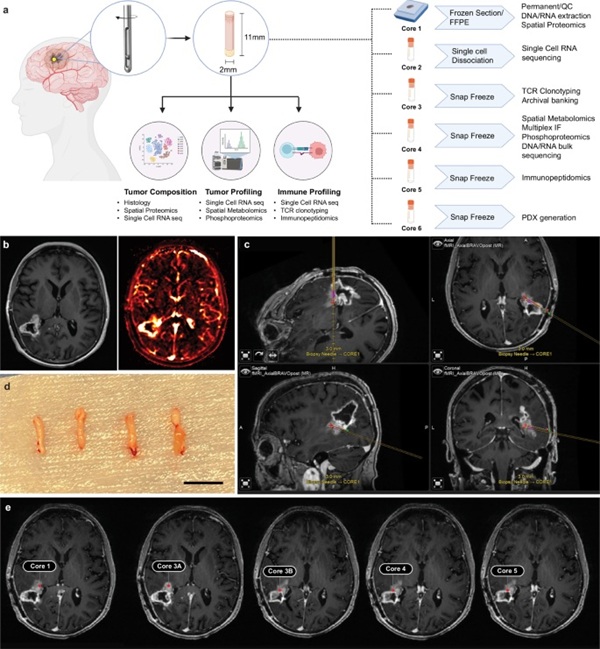Rapid Colorimetric Assay Quantifies Urease Activity
|
By LabMedica International staff writers Posted on 13 Nov 2013 |

Image: Synergy MX Monochromator-Based Multi-Mode Microplate Reader (Photo courtesy of BioTek).
A novel high throughput colorimetric urease activity assay was compared to the Nessler method and the new method employs phenol red to determine the urease activity.
This method is rapid, sensitive, easy, cost-effective, does not use any toxic chemical reagents, significantly reduces sample-processing time, and allows real-time investigations.
Scientists at the University of Houston (TX, USA) determine the urease activity of seven urease-positive (+) and two urease-negative (−) bacteria from diverse environmental sources. All cultures were incubated for 24 hours at 150 rpm (INNOVA 44, New Brunswick Scientific Co.; Enfield, CT, USA) in their specific growth conditions. The bacterial cells were then adjusted to an optical density of 0.5 at 600 nm with a plate reader.
Suspensions for all microorganisms were inoculated into Stuart's broth in triplicates into flat-bottom 96-well plate and read at 430 nm and 560 nm every 30 minutes for 24 hours with the Synergy MX Microtiter plate reader (BioTek; Winooski, VT, USA). To quantify the urease activity with this new method, the reaction rates were calculated from the absorbance data and they were correlated with the urease activity based on the standard curve of the urease enzyme. The results of this method were compared to the standard Nessler method.
The two methods showed related but not identical values. The Nessler method requires sample collection and preparation steps before measurement of the enzyme activity, but the new method does not, which could explain the slightly different results. In addition, it was found that filtration affects the enzymatic activity, which might be another possible cause for the observed variation between the two results.
The authors concluded that the new method is high throughput, it has decreased analysis processing, and provides a shorter assay work-up. These features make this method a good alternative to the Nessler method for rapid quantification and screening of urease activity. The study was published on October 5, 2103, in the Journal of Microbiological Methods.
Related Links:
University of Houston
New Brunswick Scientific Co.
BioTek
This method is rapid, sensitive, easy, cost-effective, does not use any toxic chemical reagents, significantly reduces sample-processing time, and allows real-time investigations.
Scientists at the University of Houston (TX, USA) determine the urease activity of seven urease-positive (+) and two urease-negative (−) bacteria from diverse environmental sources. All cultures were incubated for 24 hours at 150 rpm (INNOVA 44, New Brunswick Scientific Co.; Enfield, CT, USA) in their specific growth conditions. The bacterial cells were then adjusted to an optical density of 0.5 at 600 nm with a plate reader.
Suspensions for all microorganisms were inoculated into Stuart's broth in triplicates into flat-bottom 96-well plate and read at 430 nm and 560 nm every 30 minutes for 24 hours with the Synergy MX Microtiter plate reader (BioTek; Winooski, VT, USA). To quantify the urease activity with this new method, the reaction rates were calculated from the absorbance data and they were correlated with the urease activity based on the standard curve of the urease enzyme. The results of this method were compared to the standard Nessler method.
The two methods showed related but not identical values. The Nessler method requires sample collection and preparation steps before measurement of the enzyme activity, but the new method does not, which could explain the slightly different results. In addition, it was found that filtration affects the enzymatic activity, which might be another possible cause for the observed variation between the two results.
The authors concluded that the new method is high throughput, it has decreased analysis processing, and provides a shorter assay work-up. These features make this method a good alternative to the Nessler method for rapid quantification and screening of urease activity. The study was published on October 5, 2103, in the Journal of Microbiological Methods.
Related Links:
University of Houston
New Brunswick Scientific Co.
BioTek
Latest Microbiology News
- New Blood Test Detects Up to Five Infectious Diseases at POC
- Molecular Stool Test Shows Potential for Diagnosing TB in Adults with HIV
- New Test Diagnoses Bacterial Meningitis Quickly and Accurately
- Handheld Device Delivers Low-Cost TB Results in Less Than One Hour
- New AI-Based Method Improves Diagnosis of Drug-Resistant Infections
- Breakthrough Diagnostic Technology Identifies Bacterial Infections with Almost 100% Accuracy within Three Hours
- Innovative ID/AST System to Help Diagnose Infectious Diseases and Combat AMR
- Gastrointestinal Panel Delivers Rapid Detection of Five Common Bacterial Pathogens for Outpatient Use
- Rapid PCR Testing in ICU Improves Antibiotic Stewardship
- Unique Genetic Signature Predicts Drug Resistance in Bacteria
- Unique Barcoding System Tracks Pneumonia-Causing Bacteria as They Infect Blood Stream
- Rapid Sepsis Diagnostic Test Demonstrates Improved Patient Care and Cost Savings in Hospital Application
- Rapid Diagnostic System to Detect Neonatal Sepsis Within Hours
- Novel Test to Diagnose Bacterial Pneumonia Directly from Whole Blood
- Interferon-γ Release Assay Effective in Patients with COPD Complicated with Pulmonary Tuberculosis
- New Point of Care Tests to Help Reduce Overuse of Antibiotics
Channels
Clinical Chemistry
view channel
AI-Powered Blood Test Accurately Detects Ovarian Cancer
Ovarian cancer ranks as the fifth leading cause of cancer-related deaths in women, largely due to late-stage diagnoses. Although over 90% of women exhibit symptoms in Stage I, only 20% are diagnosed in... Read more
Automated Decentralized cfDNA NGS Assay Identifies Alterations in Advanced Solid Tumors
Current circulating cell-free DNA (cfDNA) assays are typically centralized, requiring specialized handling and transportation of samples. Introducing a flexible, decentralized sequencing system at the... Read more
Mass Spectrometry Detects Bacteria Without Time-Consuming Isolation and Multiplication
Speed and accuracy are essential when diagnosing diseases. Traditionally, diagnosing bacterial infections involves the labor-intensive process of isolating pathogens and cultivating bacterial cultures,... Read more
First Comprehensive Syphilis Test to Definitively Diagnose Active Infection In 10 Minutes
In the United States, syphilis cases have surged by nearly 80% from 2018 to 2023, with 209,253 cases recorded in the most recent year of data. Syphilis, which can be transmitted sexually or from mother... Read moreMolecular Diagnostics
view channel
Calprotectin Testing Predicts Future Atherosclerotic Heart Disease Risk
Emerging evidence highlights the critical role of the immune system in the development of atherosclerotic cardiovascular disease (ASCVD), a condition characterized by the gradual buildup of fatty deposits,... Read more
Low-Cost Blood Test Enables Early Alzheimer’s Detection
Scientists have identified several reliable blood-based biomarkers for Alzheimer’s disease. These proteins, including amyloid and tau, accumulate in the brain and blood as the disease progresses.... Read moreHematology
view channel
First Point-of-Care Heparin Monitoring Test Provides Results in Under 15 Minutes
Heparin dosing requires careful management to avoid both bleeding and clotting complications. In high-risk situations like extracorporeal membrane oxygenation (ECMO), mortality rates can reach about 50%,... Read more
New Scoring System Predicts Risk of Developing Cancer from Common Blood Disorder
Clonal cytopenia of undetermined significance (CCUS) is a blood disorder commonly found in older adults, characterized by mutations in blood cells and a low blood count, but without any obvious cause or... Read moreImmunology
view channel
Stem Cell Test Predicts Treatment Outcome for Patients with Platinum-Resistant Ovarian Cancer
Epithelial ovarian cancer frequently responds to chemotherapy initially, but eventually, the tumor develops resistance to the therapy, leading to regrowth. This resistance is partially due to the activation... Read more
Machine Learning-Enabled Blood Test Predicts Immunotherapy Response in Lymphoma Patients
Chimeric antigen receptor (CAR) T-cell therapy has emerged as one of the most promising recent developments in the treatment of blood cancers. However, over half of non-Hodgkin lymphoma (NHL) patients... Read morePathology
view channel
AI Microscope Spots Deadly Blood Clots Before They Strike
Platelets are small blood cells that act as emergency responders in the body, rushing to areas of injury to help stop bleeding by forming clots. However, sometimes platelets can overreact, leading to complications.... Read more
New Technology Improves Understanding of Complex Biological Samples
Tissues are composed of a complex mixture of various cell types, which complicates our understanding of their biological roles and the study of diseases. Now, a multi-institutional team of researchers... Read more
Combining Multiple Laboratory Techniques Provides Deeper Insights into Deadly Brain Tumors
Glioblastoma (GBM) is a highly aggressive primary brain cancer that currently has limited effective treatments. Stereotactic needle biopsies are commonly employed for diagnosis; however, their use is restricted... Read more
AI-Based Diagnosis System Identifies Malaria Parasites from Blood Smear Images
Malaria diagnosis has traditionally been performed manually via microscopic examination, a process that is not only time-consuming but also highly dependent on the expertise and accuracy of healthcare providers.... Read moreTechnology
view channel
Advanced Predictive Algorithms Identify Patients Having Undiagnosed Cancer
Two newly developed advanced predictive algorithms leverage a person’s health conditions and basic blood test results to accurately predict the likelihood of having an undiagnosed cancer, including ch... Read more
Light Signature Algorithm to Enable Faster and More Precise Medical Diagnoses
Every material or molecule interacts with light in a unique way, creating a distinct pattern, much like a fingerprint. Optical spectroscopy, which involves shining a laser on a material and observing how... Read more
Disposable Microchip Technology Could Selectively Detect HIV in Whole Blood Samples
As of the end of 2023, approximately 40 million people globally were living with HIV, and around 630,000 individuals died from AIDS-related illnesses that same year. Despite a substantial decline in deaths... Read more
Pain-On-A-Chip Microfluidic Device Determines Types of Chronic Pain from Blood Samples
Chronic pain is a widespread condition that remains difficult to manage, and existing clinical methods for its treatment rely largely on self-reporting, which can be subjective and especially problematic... Read moreIndustry
view channel
Qiagen Acquires NGS Analysis Software Company Genoox
QIAGEN (Venlo, the Netherlands) has signed a definitive agreement to acquire Genoox (Tel Aviv, Israel), a provider of artificial intelligence (AI)-powered software that enables clinical labs to scale and... Read more
Cepheid and Oxford Nanopore Technologies Partner on Advancing Automated Sequencing-Based Solutions
Cepheid (Sunnyvale, CA, USA), a leading molecular diagnostics company, and Oxford Nanopore Technologies (Oxford, UK), the company behind a new generation of sequencing-based molecular analysis technologies,... Read more
Grifols and Tecan’s IBL Collaborate on Advanced Biomarker Panels
Grifols (Barcelona, Spain), one of the world’s leading producers of plasma-derived medicines and innovative diagnostic solutions, is expanding its offer in clinical diagnostics through a strategic partnership... Read more
















